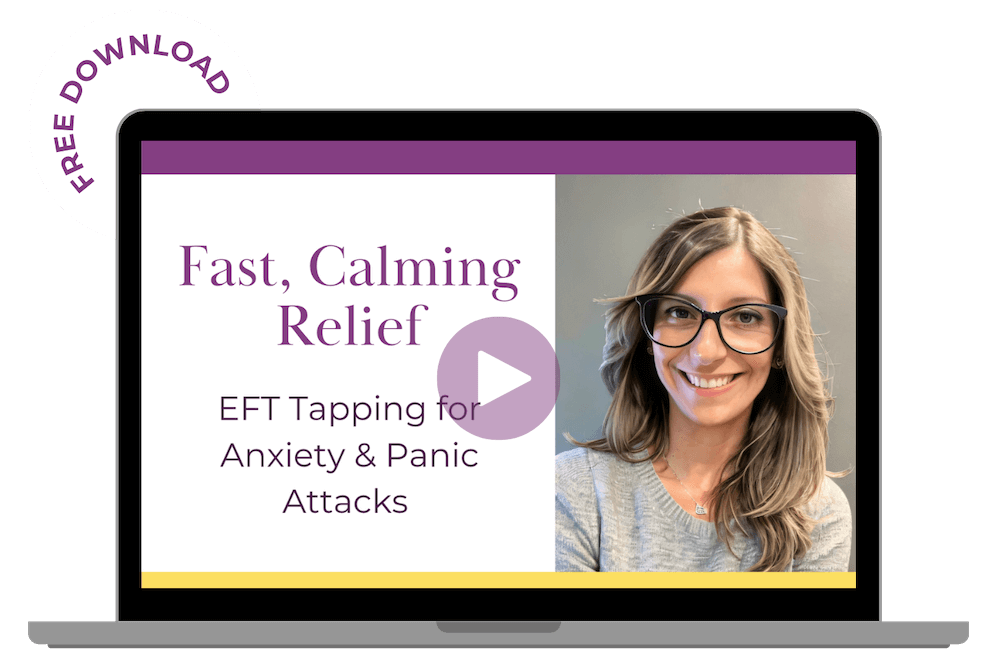Anxiety is an affliction that transcends physical limitations, impacting minds and bodies with a reach that goes beyond what’s often visible on the surface. Though it’s sometimes referred to as the “invisible illness,” the statistics about anxiety speak volumes to its widespread impact on individuals, families, and communities.
For Silvia Araya’s audience, understanding anxiety goes beyond personal experience – it’s an essential extension of her practice, feeding into the holistic understanding and treatment of this condition.
What is Anxiety, Really?
At its core, anxiety is a natural response to stress, often experienced as a feeling of fear or apprehension about what’s to come. It’s often accompanied by physical symptoms such as an increased heart rate, quick breathing, and sweating.
But when this feeling becomes an excessive, irrational dread that interferes with daily life, we’re looking at an anxiety disorder – and these conditions are more common than you might think.
Types and Symptoms
There are several types of anxiety disorders, including Generalized Anxiety Disorder (GAD), Panic Disorder, Social Anxiety Disorder, and various phobia-related disorders. The symptoms can range from mild and manageable to severe and debilitating, depending on the individual and the type of disorder they’re facing. These might include:
- Feelings of Worry: Constant worry or fear, often without a distinguishable cause, especially for GAD sufferers.
- Panic Attacks: Sudden, intense feelings of fear, presenting with physical symptoms like chest pain, heart palpitations, and shortness of breath.
- Phobias: Intense fear of a specific object or a situation, such as fear of heights (acrophobia) or enclosed spaces (claustrophobia).
- Social Anxiety: Overwhelming worry and self-consciousness about everyday social situations, sometimes known as social phobia.
The Prevalence of Anxiety: A Global Outlook
The World Health Organization (WHO) states that anxiety disorders are the most common mental disorders worldwide, with specific phobia, major depressive disorder, and social phobia being the most prevalent anxiety disorders.
The numbers are staggering, and they continue to climb, especially in urban environments, where stress and pressure are often heightened.
International Insights
Globally, over 260 million people are suffering from anxiety disorders, making it a leading cause of disability. The societal and economic burden of anxiety is substantial, due to not just direct healthcare costs, but also the indirect costs associated with lost productivity and disability benefits.
The prevalence of anxiety is linked to various factors, including genetics, brain chemistry, and life events, but environmental stressors play a significant role.
Local Context
The narrative shifts when we look at specific countries or regions.
An Australian survey found that in 2019, over 3 million Australians (14% of the population) had an anxiety disorder, and in the US, the Anxiety and Depression Association of America (ADAA) estimates that anxiety disorders are the most common mental illness, affecting 40 million adults.
Demographics and Anxiety: Who Bears the Brunt?
Anxiety does not discriminate, but certain demographics seem to be more susceptible to its grasp. Understanding these patterns can aid in early identification, intervention, and targeted support for these groups in need.
Gender Disparities
Gender-wise, the rates of anxiety disorders seem to be higher among females than males. This gender gap is a point of interest and inquiry within the mental health community, leading to discussions about biological, psychological, and sociocultural explanations for this disparity.
Age Factors
Anxiety doesn’t wait for a convenient time to strike. It’s prevalent across all age groups, from children to the elderly, but the nature and triggers of anxiety often differ significantly.
Adolescents and young adults particularly seem to be more susceptible, possibly due to the challenges of identity formation and life transitions.
Socioeconomic Status
Socioeconomic status and anxiety are intertwined in complex ways. While there’s evidence that high-income countries report more cases of anxiety disorders, within countries, those from lower socioeconomic backgrounds are often at a higher risk, pointing to the stress that accompanies financial instability as a significant trigger for anxiety.
Anxiety’s Daily Assault on Life
Living with an anxiety disorder isn’t experiencing just the occasional bout of worry; it’s a daily struggle that seeps into every area of life. Anxiety can disrupt one’s ability to work, lead to strained relationships, and even take a toll on physical health.
Work and Productivity
Anxiety in the workplace often translates to decreased productivity, missed days, and difficulty with concentration. High-stress jobs can be a breeding ground for anxiety, with employees in these roles experiencing almost twice the standard rate of anxiety disorders.
Relationships and Social Interaction
Anxiety tends to isolate individuals, leading to strained relationships and social withdrawal. It’s like a barrier to meaningful connection, an unseen wall that anxiety builds around people who could use support and understanding the most.
Physical Health Implications
The mind-body connection is especially profound with anxiety. It’s a predecessor to a myriad of physical health issues, from gastrointestinal upset to cardiovascular problems, as our bodies bear the brunt of the “fight or flight” response that anxiety triggers.
Seeking Solace: Professional Help for Anxiety
Thankfully, anxiety isn’t untreatable. There are numerous options for professional help, ranging from therapy to medications, and a combination thereof, tailored to the individual’s needs.
Therapeutic Interventions
Cognitive-behavioral therapy (CBT) has been particularly effective in treating anxiety disorders, helping individuals recognize and change their unhealthy thinking patterns. Other forms of therapy, such as exposure therapy and acceptance and commitment therapy (ACT), are also found to be beneficial.
Medication Management
For those seeking medication, selective serotonin reuptake inhibitors (SSRIs) and serotonin-norepinephrine reuptake inhibitors (SNRIs) are commonly prescribed, regulating and balancing the chemicals in the brain known to play a role in mood and anxiety.
Alternative Treatments
Beyond conventional treatments, alternative therapies like mindfulness, yoga, and acupuncture show promise in managing anxiety. Although they should never replace professional medical advice, these practices can be a valuable complementary approach.
Coping Strategies and Support Systems
In the face of anxiety, building resilience and establishing robust support systems can significantly mitigate the condition’s impact. Understanding and implementing these strategies are key to taking control back from anxiety.
Self-Care and Coping Mechanisms
Regular exercise, maintaining a healthy diet, and ensuring adequate sleep are cornerstones of self-care practices. Additionally, mindfulness and relaxation techniques have been shown to decrease anxiety levels and induce feelings of calm and control.
Building Support Networks
No one should face anxiety alone. Building a network of friends, family, and support groups can provide the safety net necessary to deal with anxiety’s daily struggles. Peer support, especially from those who have experienced similar battles, can be incredibly validating and comforting.
The Path Forward: A Call to Action
Understanding anxiety from a statistical perspective is key to developing a comprehensive approach to tackling this pervasive issue. By shedding light on the numbers, we can empower individuals, practitioners, and communities to address this modern epidemic.
Recognizing the signs, seeking help, and fostering a supportive environment are crucial steps in the fight against anxiety. Whether for yourself or in supporting loved ones, remember that anxiety can be managed, and with the right tools and guidance, a fulfilling, panic-free life is an attainable reality.
It’s not just about the individual though; it’s about collective well-being. Each step taken, no matter how small, amplifies the voice against anxiety, making room for healing and progress. The statistics illuminate our path, but it is our collective actions that will guide the way towards a future with less anxiety and more resilience.







